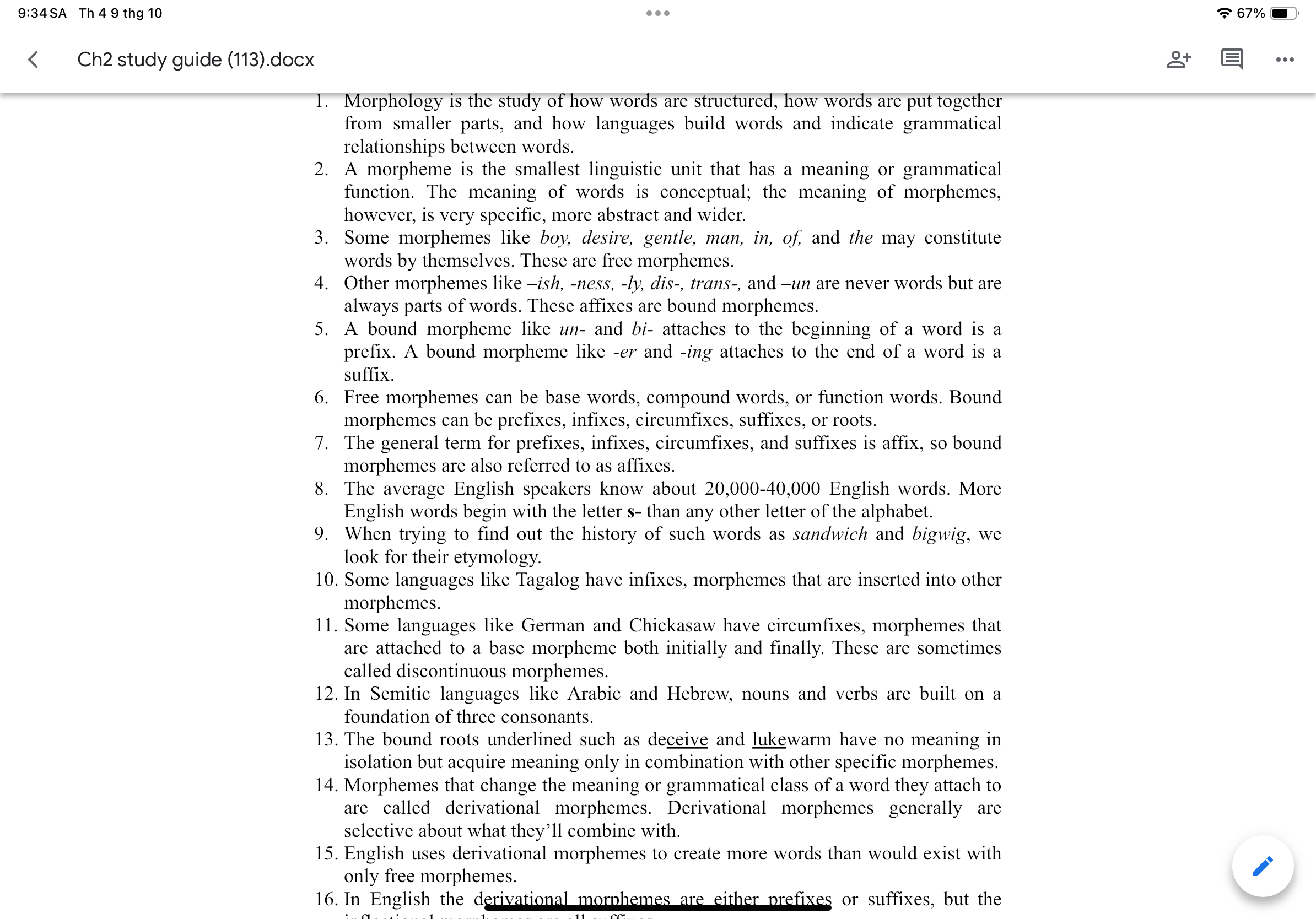What are morphemes and how are they classified? Can you explain the differences between free and bound morphemes, and provide examples of prefixes and suffixes?

Understand the Problem
The question seems to focus on terminology and concepts related to morphology, specifically about morphemes and their classifications. It seeks understanding of the distinction between free and bound morphemes, as well as the different types of morphemes like prefixes, suffixes, and infixes.
Answer
Morphemes are classified as free (stand-alone words) and bound (must attach to others), like prefixes and suffixes.
Morphemes are the smallest units of meaning in a language and are classified as free or bound. Free morphemes can stand alone as words (e.g., "dog"), while bound morphemes must attach to other morphemes (e.g., "-s" in "dogs"). Prefixes (e.g., "un-") and suffixes (e.g., "-ing") are types of bound morphemes.
Answer for screen readers
Morphemes are the smallest units of meaning in a language and are classified as free or bound. Free morphemes can stand alone as words (e.g., "dog"), while bound morphemes must attach to other morphemes (e.g., "-s" in "dogs"). Prefixes (e.g., "un-") and suffixes (e.g., "-ing") are types of bound morphemes.
More Information
Morphemes serve as the building blocks of meaning, forming the base, prefixes, and suffixes of words. Understanding them helps in learning word formation and grammar effectively.
Tips
A common mistake is confusing free morphemes with root words. Not all root words are free morphemes.
Sources
- Morphemes Examples & Definition – Study.com - study.com
- Bound and Free Morpheme Examples - YourDictionary - yourdictionary.com
- Morphemes: Definition, Types & Examples | Vaia - vaia.com
AI-generated content may contain errors. Please verify critical information